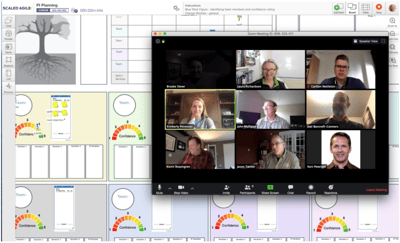Moving forward with virtual planning events is vitally important because companies prepared for the steep recovery will be best positioned to lead markets long into the future. Delaying planning activities, such as PI Planning, will negatively impact the ability of businesses to recover and maintain their competitive positioning.
Companies must be realistic. Fully remote PI Planning is a paradigm different than in-person or partially distributed approaches.
- Coordination within teams is disrupted, which means refinement and preparation takes longer and is arguably as important as the PI planning event itself.
- Virtual tools and collaboration spaces add an additional level of complexity to logistics preparation.
- Spontaneous communication between teams and leaders during PI Planning is more difficult and, despite technology, relies more heavily on skilled Release Train Engineers (RTE), effective ScrumMasters and prepared Product Owners.
Solutions for Remote PI Planning
To overcome these challenges, there are four elements of focus when preparing for remote PI Planning:
- Thoughtful advanced scheduling and planning to ensure smooth collaboration
- An extended preparation and event timeline for fully remote team preparation
- Added logistics and coordination for effective remote facilitation
- Virtual collaboration tools to facilitate remote interaction
Want to Learn More? Check out these webinars on Remote PI Planning . . .

Our experts recently shared their experiences in executing smooth and effective PI Planning:
For Product Managers and Product Owners– Kim Poremski discusses how preparation activities and timeline for Product Managers, Product Owners, and teams must evolve to best accommodate fully remote PI Planning.
For Scrum Masters and RTEs – John Mulligan shares his insights as to what Scrum Masters and RTEs need to consider in planning and executing their own PI Planning events.
*written by Kevin Rosengren




